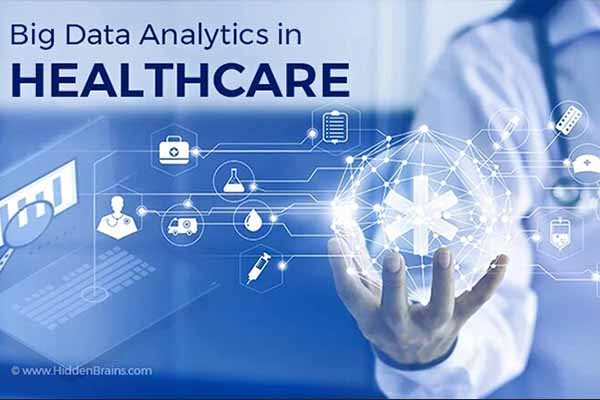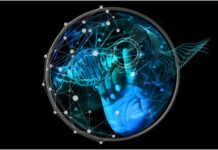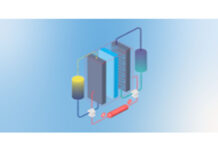The term “big data” in the context of healthcare refers to the enormous amounts of information produced by the use of digital technology for the collection of patient records and the management of hospital performance that would otherwise be too large and complex for conventional technologies. Big data analytics in healthcare has a lot of beneficial and even life-saving effects. Big-style data, in its simplest form, is the enormous amounts of data generated by the digitization of everything that are then collected and processed by particular technology.
In fact, it has been expensive and time-consuming for years to acquire vast amounts of data for medical use. With today’s constantly evolving technologies, it is now simpler to not only gather this data but also to produce thorough healthcare reports and transform it into pertinent essential insights that can be used to deliver better care. This is the aim of healthcare data analysis: to use data-driven results to forecast and solve a problem before it is too late, as well as to evaluate procedures and treatments more quickly, keep better track of inventories, involve patients more in their own health, and provide them the means to do so.
To comprehend a patient, organization, or community, big data in healthcare leverages health-related information about a person or community. Healthcare data management and analysis used to be time-consuming and expensive. The healthcare industry has recently made great strides to keep up with the flow of big data in the industry due to technology.
Various sources, including diagnostic tools, medical equipment, instruments, and online services, are distributing data across a healthcare network. The assistance of big data tools like Hadoop and Spark is used to do this.
Applications and Advantages of Big Data in Healthcare
Diagnostics
It is feasible to swiftly and accurately diagnose an illness with the aid of Big data and data analytics. Doctors typically check patients, speak with them about their illnesses, and match their symptoms to known disease images. They conduct literature searches and confer with peers when dealing with complicated issues. Big data, however, offers a more intelligent method of patient diagnosis. The patient data can simply be gathered by doctors and entered into an algorithm that will provide the most likely diagnoses. Additionally, algorithms will suggest high-value tests and limit the usage of pointless tests. Additionally, CV is commonly employed in diagnostics. For instance, this technology aids in the examination of the retina with the goal of spotting irregularities early and preventing diseases.
Modeling and Predicting Results
Healthcare professionals can make better clinical decisions with the help of big data and predictive analytics. In medicine, prognostic modeling serves a variety of functions. Some models try to forecast how certain illnesses and/or therapies will pan out in the future. Others concentrate on finding patients who could be at risk of developing a specific illness. Additionally, there are models that predict the population-wide spread of illnesses. Predictive modeling, for instance, has been effectively used in several nations to detect undiagnosed diabetes, predict survival following in-hospital cardiopulmonary resuscitation, and predict the COVID-19 pandemic’s progress.
Monitoring Of Patient Vitals in Real-Time
One of the most important trends in healthcare technology is the usage of wearables and other IoT devices, which healthcare technology companies currently produce in sufficient quantities. They can automatically gather data on your blood pressure, temperature, oxygen saturation, heart rate, pulse, blood sugar level, and other vital signs. As a result, they do away with the necessity for patients to travel to the providers or pick it up themselves. These gadgets produce a ton of useful data that can aid medical professionals in diagnosing and treating patients.
Treating Complex Illnesses
In order to determine which treatment plans have the highest rates of success, data gathered from patients on various treatment modalities can be examined for trends and patterns. This is crucial in the fight against serious diseases including cancer, AIDS, multiple sclerosis, etc.
Big data on population health aids in raising people’s standards of living. It offers the ability to foresee infectious disease epidemics and stop them from spreading. Prior pandemics did not have access to big data techniques. Big data enhances epidemic surveillance and reaction in the coronavirus instance. Big data and data analytics are being used by nations all over the world to offer real-time statistics, monitor the virus’s spread, and forecast the effects of this pandemic.
Preventive Medicine
Disease prevention is preferable to disease treatment for patients, hospitals, and insurance companies. Doctors prefer that their patients maintain good health and avoid hospitals. And this is where big data is useful. Big data makes it possible to estimate a person’s likelihood of becoming ill based on their habits and to spot early warning signals of serious illness.
Big data is extremely important in telemedicine. For instance, surgeons can operate on patients despite physically being kilometers away thanks to robots and high-speed real-time data. Big data is essential for initial diagnosis, remote patient monitoring, and virtual nursing support in addition to robot-assisted surgery.
Imaging
It can be difficult to analyze imaging data from CT, MRI, or PET scans. However, big data analytics can automate radiologists’ image reading processes. In order to assist medical professionals with the diagnosis, algorithms can recognize specific patterns in the pixels and translate them into numbers. Therefore, medical professionals have the option to create image history catalogs and employ computer vision and data science tools for speedy analysis.
Digital Health Records
One of the largest sources of big data in the healthcare industry is electronic health records (EHRs). They have already been used by many HCOs. The HITECH study indicates that 94% of US hospitals are using EHRs. EHRs provide patients and physicians with a thorough understanding of a patient’s medical background. Records are accessible to providers from the public and private sectors and are shared via secure information systems. Doctors can make modifications over time without having to fill out paperwork or worry about data replication. EHRs can also track medications to see if a patient has been following a doctor’s recommendations or send alerts and reminders when a patient needs a new blood test.
Security
Big data and data analytics can aid in the detection and prevention of fraud. It is feasible to spot alterations in network activity or any other behavior that points to a cyberattack and take action to obstruct destructive actions.
Hospital Administration
The management of hospitals depends on big data. In addition to lowering costs dramatically, it can enhance hospital operations. By using data-driven analytics, you may, for instance, forecast when you might need people in specific departments during busy times while redistributing qualified personnel to other areas at down times. Additionally, by monitoring overall employee performance, you may use healthcare data analysis to learn who and when needs support or training.
However, a comprehensive plan is needed to apply a big data solution in the healthcare industry. Either you can create your own solution or buy a pre-made item. The most important thing is to have a clear understanding of your needs and objectives.
Improved Decision-Making and Strategic Planning
Healthcare professionals can see challenges and possibilities that stem from them by using bid data and data analytics to better understand and identify them. For example, it is possible to pinpoint the locations that are suffering the most and direct more care units there. Big data analysis in healthcare also aids in the discovery of new treatments and medications. Healthcare professionals can find novel medications by combining historical, real-time, predictive analytics, and data visualization approaches to highlight prospective advantages and disadvantages in trials or procedures.
challenges in Big data in Healthcare
Big data in healthcare is still developing as a relatively young field to keep up with the quick speed and changing nature of technology. Organizations and leaders may find it difficult to know where to begin when using data analytics in healthcare to identify the relevant information given the large amounts of data at their disposal.
Utilizing all of this data prompts questions about healthcare cybersecurity and data privacy. Healthcare businesses frequently worry about the issue of governance, or who owns and is in charge of monitoring the development, implementation, and administration of big data.
Bottom Line
Healthcare analysts employ big data to inform health prevention, intervention, and management using a variety of data analytics technologies and techniques. These kinds of initiatives can assist improve patient experience, increase care efficiency and quality, and reduce healthcare costs. Big data analytics for healthcare enables the ability to have a more thorough understanding of something in order to make wiser decisions.
How the global coronavirus crisis has been touched by big data in healthcare is among the most recent and pertinent examples. Big data analytics in healthcare helped the COVID-19 vaccines evolve quickly. Researchers can quickly develop sophisticated treatments by exchanging data among themselves. By enabling healthcare information to be analyzed considerably more quickly than in the past during prior pandemics, big data in healthcare also forecasted the spread of disease.















